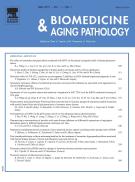In silico identification of potent inhibitors of alpha-synuclein aggregation and its in vivo evaluation using MPTP induced Parkinson mice model - 10/05/14


Abstract |
Parkinson disease is a progressive neurodegenerative disorder characterized by the presence of Lewy bodies with dense α-synuclein self-aggregation which is responsible for its toxic effect on Substantia nigra pars compacta and resultant neuronal death. Hence, blocking alpha-synuclein aggregation is a new channel to cure PD. This study initially investigates drug likeness and ADMET properties of CNB-001, 7,8 dihydroxyflavone, curcumin, naringenin and emodin and its inhibitory effect on alpha-synuclein (PDB: 1XQ8) aggregation via molecular docking (LeadIT). Results revealed that the ligands satisfy drug likeness and ADMET properties and best-fit ligands were associated with VAL95, GLU83 and ALA91 as major amino acid residues of receptor site. Moreover, CNB-001 showed potent inhibitory effect than other compounds with a docking score of –13.6158. Further, we investigated the inhibitory effect of CNB-001 against alpha-synuclein expression using MPTP induced Parkinson mice model. Results explicated and confirmed that CNB-001 inhibited α-synuclein expression significantly when compared to MPTP group as evinced by western blotting. Therefore, these results attribute that CNB-001 can be further developed as a promising therapeutic candidate for PD treatment.
El texto completo de este artículo está disponible en PDF.Keywords : Parkinson disease, Alpha-synuclein, ADME, Toxicity, Docking, CNB-001, MPTP
Esquema
Vol 4 - N° 2
P. 147-152 - avril 2014 Regresar al númeroBienvenido a EM-consulte, la referencia de los profesionales de la salud.
El acceso al texto completo de este artículo requiere una suscripción.
¿Ya suscrito a @@106933@@ revista ?

